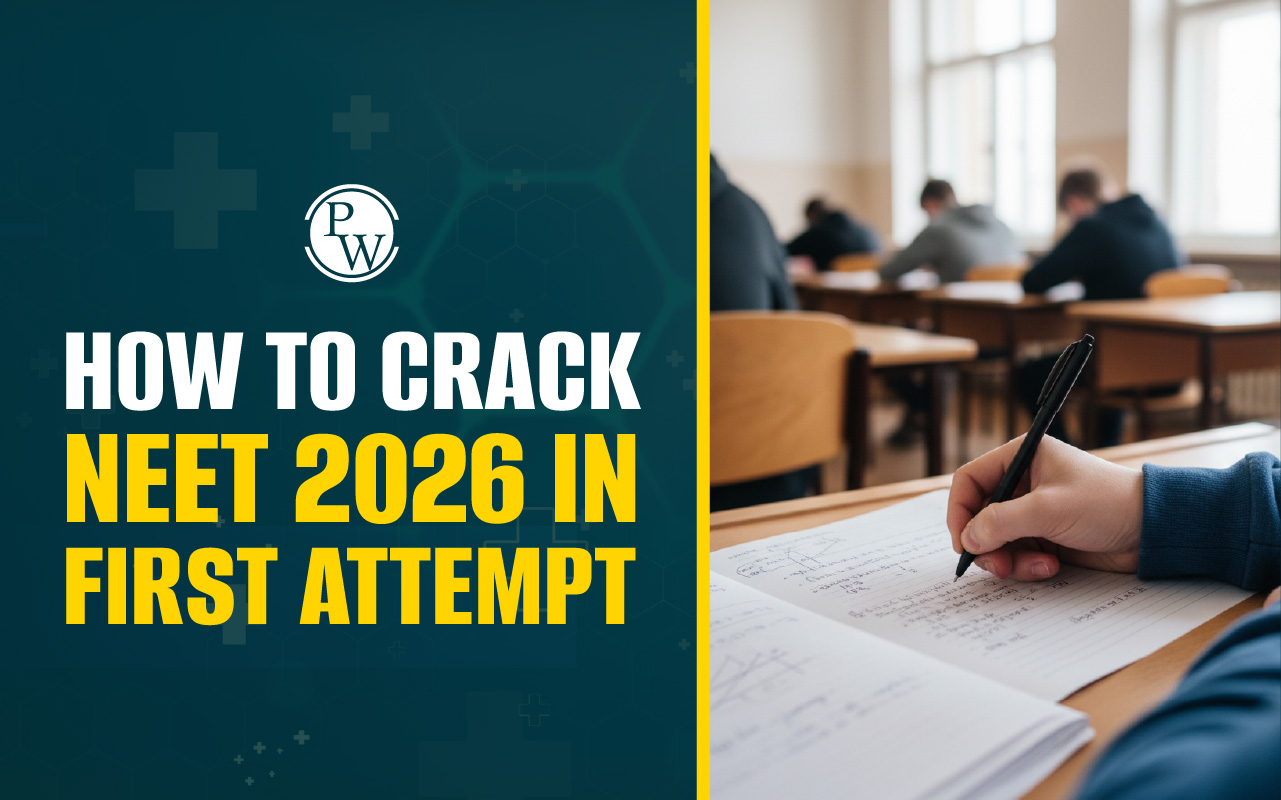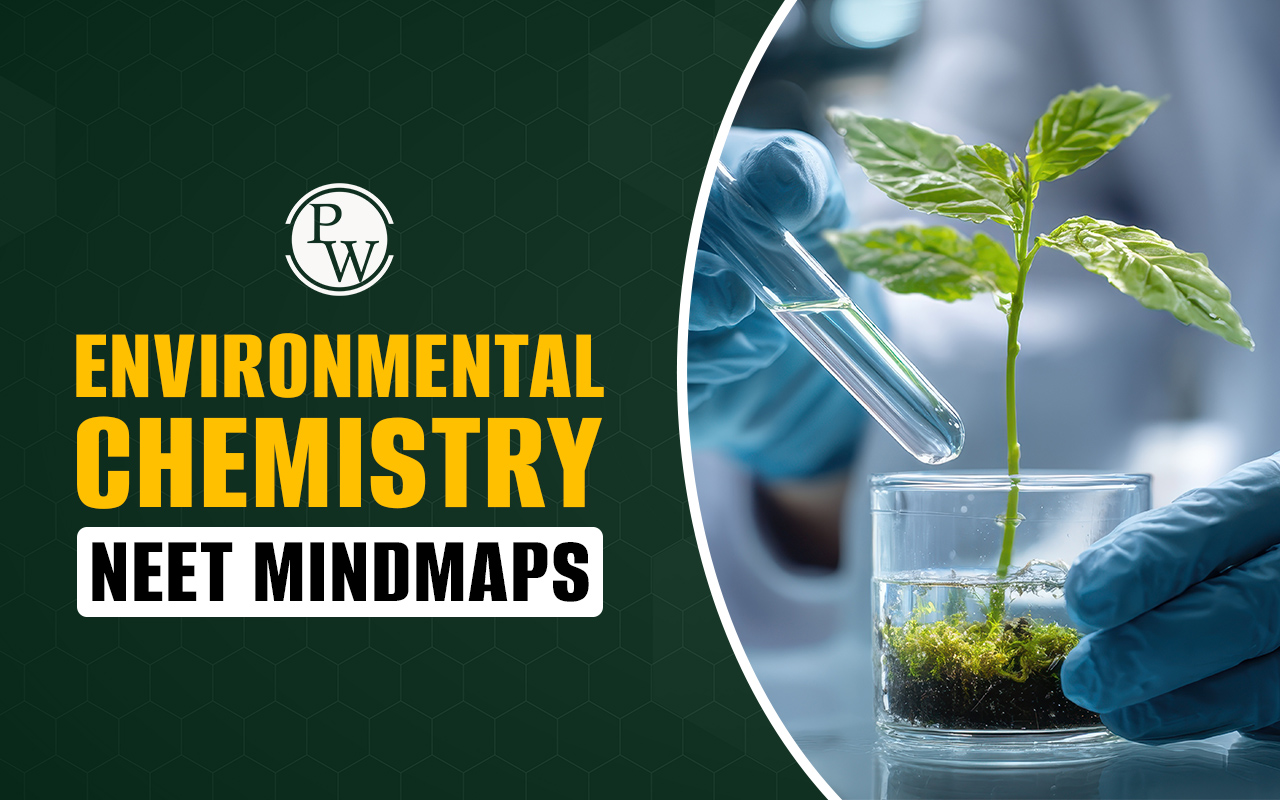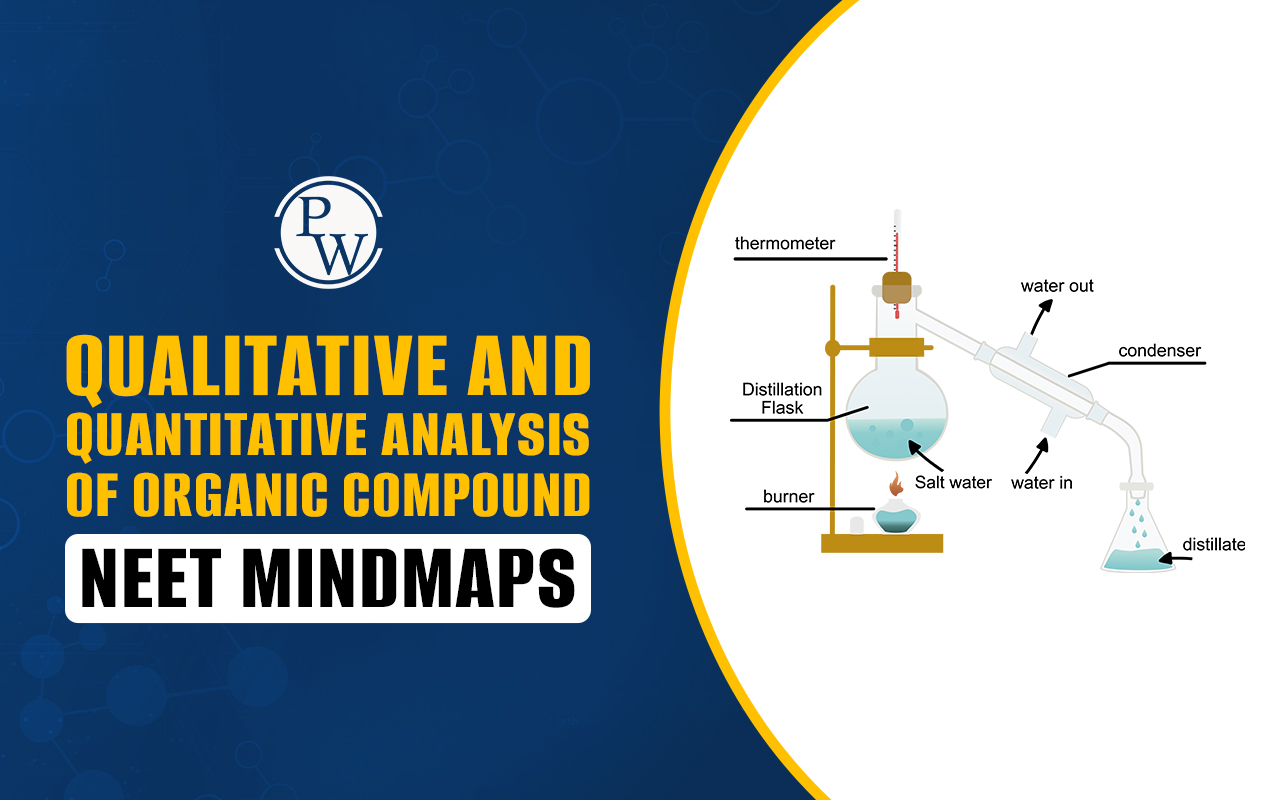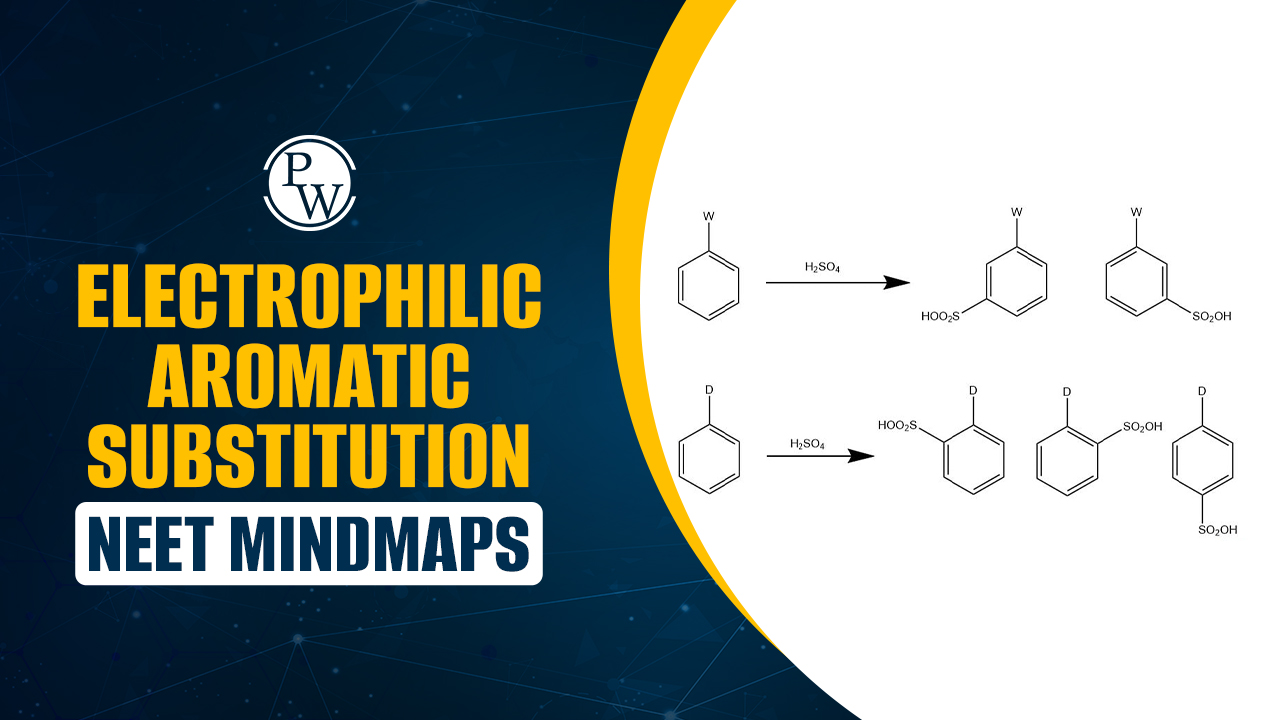
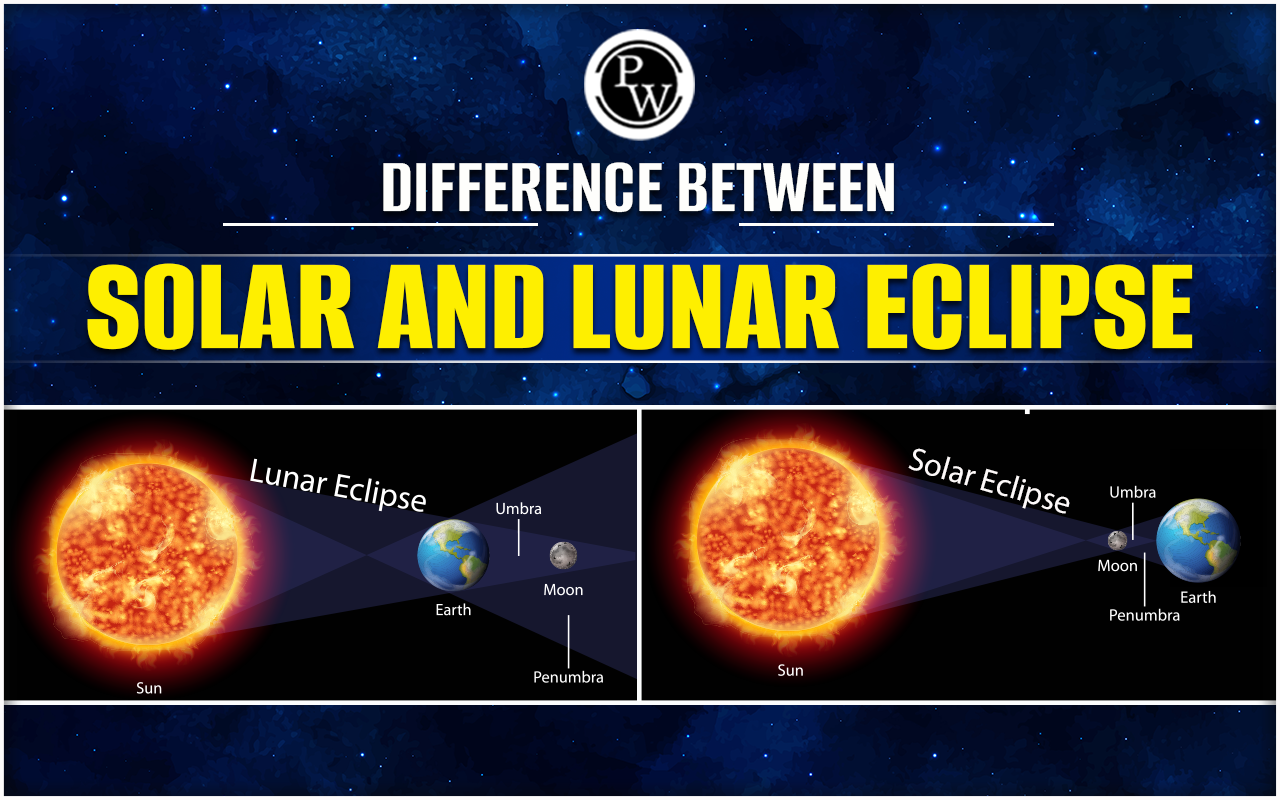
Difference Between Solar and Lunar Eclipse: As celestial bodies, the Sun and the Moon are Earth's primary light sources. The Sun, a blazing star emitting intense heat, is responsible for daytime illumination on Earth.
Eclipses are celestial phenomena in which one heavenly body partially or completely hides behind another. Eclipses of the Sun, Moon, and Earth specifically occur during solar and lunar eclipses. This article will explore the detailed meanings and difference between solar and lunar eclipse. NEET Online Coaching, curated by Physics Wallah, stands as a comprehensive study material designed specifically for Class 12 students gearing up for the NEET examination and can help you to understand the concepts of solar and lunar eclipse. This edition caters not only to the academic needs of students but also extends support to parents seeking a reliable guide for their NEET aspirants.| NEET Biology Syllabus | NEET Biology Diagrams |
| NEET Biology MCQ | NEET Biology Chapter wise Weightage |
| NEET Biology Notes | NEET Previous Year Question papers |
Difference between Solar and Lunar Eclipse Overview
Solar eclipse occurs when the Moon passes between the Earth and the Sun, casting a shadow on Earth. A lunar eclipse occurs when the Earth passes between the Sun and the Moon, casting a shadow on the Moon. Below, we will discuss these in detail.
What is the Solar Eclipse?
A solar eclipse occurs when the Moon comes between Earth and the Sun, casting its shadow over Earth's surface. The shadow consists of two main parts: the umbra, a cone where direct sunlight is completely blocked, and the penumbra, an area reached by light from only a portion of the Sun's disk. This phenomenon is related to eclipses, including lunar eclipses. An observer inside the umbra during a total solar eclipse sees the Moon's disk completely cover the Sun's disk. Conversely, a viewer inside the penumbra witnesses a partial eclipse as a result of the Moon's disk partially overlapping the Sun's disk.
The umbral cone is relatively narrow from Earth's perspective, allowing a total eclipse to be observable only within a specific strip of land or sea where the umbra passes. A total solar eclipse's maximum duration is approximately 7 ½ minutes. A partial eclipse can be observed from locations within the broader area covered by the penumbra. Occasionally, Earth intercepts the Moon's penumbra but avoids the umbra, leading to a partial eclipse visible from certain places on Earth. The intricacies of solar eclipses highlight the geometry of the Earth, Moon, and Sun alignment during these celestial events
Types of Solar Eclipse
Here are types of solar eclipse:
Total Solar Eclipse
Occurs when the Moon completely covers the Sun, casting a shadow on Earth. This is mentioned by NASA Science and Exploratorium. Weather permitting, viewers within the eclipse path may observe the Sun's corona, the outer atmosphere normally obscured by the Sun's bright face. Notably, a total solar eclipse allows viewers to remove eclipse glasses briefly when the Moon fully covers the Sun.
Annular Solar Eclipse
An annular solar eclipse transpires when the Moon moves between the Sun and Earth but is positioned near its farthest point from Earth. Due to the Moon's greater distance, it appears smaller than the Sun and fails to block it entirely. Consequently, the Moon appears as a dark disk atop a larger, luminous disk, forming a ring-like appearance around the Moon.
Partial Solar Eclipse
A partial solar eclipse unfolds when the Moon moves between the Sun and Earth, but the three celestial bodies are not perfectly aligned. Only a portion of the Sun seems covered, resulting in a crescent shape. Observers outside the region encompassed by the Moon's inner shadow witness a partial solar eclipse during total or annular solar eclipses.
Hybrid Solar Eclipse
The curvature of the Earth's surface can cause an eclipse to transition between annular and total phases as the Moon's shadow traverses the globe. This phenomenon is referred to as a hybrid solar eclipse.
What is the Lunar Eclipse?
A lunar eclipse occurs when the Moon enters Earth's shadow, positioned opposite the Sun, causing Earth's shadow to traverse the Moon's surface. This celestial event is observable under similar conditions at all locations on Earth where the Moon is above the horizon. Lunar eclipses exclusively occur during a full moon. The motion of the Moon around Earth is from west to east. For an observer facing south, the shadowing of the Moon initiates at its left edge. If the circumstances favor a total eclipse, the entire Moon disk passes through the umbra in approximately two hours.
During this time, the Moon is not entirely dark as some sunlight, remarkably the redder light, penetrates Earth's atmosphere, refracts into the shadow cone, and reaches the Moon. Meteorological conditions on Earth influence the amount and color of light that can penetrate the atmosphere. Generally, the eclipsed Moon is visibly reddish-brown or coppery, with brightness varying between eclipses.
Types of Lunar Eclipse
Here are the types of lunar eclipse:
Total Lunar Eclipse
The Moon is entirely within Earth's shadow and often appears red.
Partial Lunar Eclipse
Only a portion of the Moon enters Earth's shadow, creating a partial darkening.
Penumbral Lunar Eclipse
The Moon passes through Earth's penumbral shadow, resulting in a subtle shading on the lunar surface.
Appulse Lunar Eclipse
- Description: An appulse lunar eclipse happens when the Moon closely approaches but doesn't fully enter the Earth's umbra.
- Appearance: There is a slight darkening at the edge of the Moon due to its proximity to the umbra.
Hybrid Lunar Eclipse
- Description: Also known as a "penumbra-umbral eclipse," a hybrid lunar eclipse occurs when the same eclipse shifts between total and penumbral as it progresses across the Earth's surface.
- Appearance: Observers may witness both partial and total phases, depending on their location.
Solar vs Lunar Eclipse - Difference Between Solar and Lunar Eclipse
The table below shows the difference between solar and lunar eclipse :
| Solar vs Lunar Eclipse - Difference between Solar and Lunar Eclipse | ||
|---|---|---|
| Aspect | Solar Eclipse | Lunar Eclipse |
| Occurrence | Moon passes between the Sun and Earth. | Earth comes between the Sun and the Moon. |
| Moon's Position | New Moon phase. | Full Moon phase. |
| Frequency | Less frequent compared to lunar eclipses. | More frequent than solar eclipses. |
| Types | Total, Partial, Annular. | Total, Partial, Penumbral. |
| Visibility | Viewable from specific regions on Earth. | Visible from nighttime regions on Earth. |
| Duration of Darkness | Short-lived during totality. | Longer duration during totality. |
| Color | No noticeable color change. | May appear reddish during totality (Blood Moon). |
| Viewing Safety | Requires protective eyewear during partial phases. | Safe to observe with the naked eye. |
| Earth's Shadow | Moon casts a shadow on Earth. | Earth's shadow falls on the Moon. |
| Direction of Movement | East to West. | West to East. |
| Culmination Time | Usually occurs during the day. | Typically occurs during the night. |
| Frequency in a Year | Can occur 2 to 5 times a year. | Can occur 2 to 7 times a year. |
| Duration of Eclipse | Shorter duration compared to lunar eclipses. | Longer duration compared to solar eclipses. |
| Ring of Fire | Applicable to Annular Solar Eclipses. | Not applicable. |
| Impact on Earth | No significant impact on Earth. | No harmful effects on Earth. |
Similarities between Solar Eclipse and Lunar Eclipse
- Solar and lunar eclipses are natural celestial occurrences resulting from the alignment of the Sun, Moon, and Earth.
- In both instances, the light from one celestial body is blocked or obscured by another, creating captivating astronomical events.
- These phenomena have intrigued and captivated human observers across history, sparking scientific exploration and documentation. Thanks to astronomical calculations, the predictable nature of solar and lunar eclipses allows for accurate forecasting.
- These celestial events provide valuable opportunities for scientific research, enabling scientists to delve into the intricacies of the Sun, Moon, and Earth's atmosphere.
- Beyond their scientific significance, solar and lunar eclipses hold cultural and mythological importance in various civilizations, often intertwined with symbolic and spiritual interpretations.
- As both types of eclipses capture public interest, they evoke a sense of wonder about the universe's mysteries.
- Furthermore, solar and lunar eclipses serve as platforms for educational outreach and public engagement in astronomy and space science.
- The experience of observing these celestial events can be enriched through specialized equipment like telescopes or cameras.
- Throughout history, solar and lunar eclipses have shaped scientific understanding, influenced cultural traditions, and inspired artistic expressions.
Difference between Solar and Lunar Eclipse FAQs
What is the visual effect of a total solar eclipse?
What happens during a partial solar eclipse?
What is a hybrid solar eclipse?
Can a solar eclipse occur every month?
What is an annular solar eclipse?




